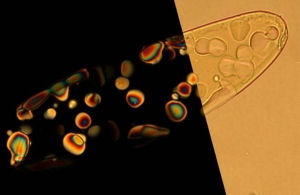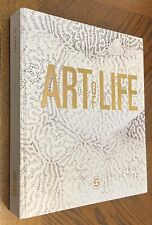
Attempts to recreate the emergence of life by mixing and reacting basic chemicals are wrong-headed, argue two US scientists, who instead propose that it is the informational architecture of a system’s chemical networks that allows it to gain causal purchase over its components and become alive.
The researchers behind the new paradigm – Paul Davies, an ASU Regents’ Professor and director of the Beyond Center for Fundamental Concepts in Science, and Sara Walker, a NASA post-doctoral fellow at the Beyond Center – have had their work published in the journal Interface.
The new theory, entitled “The Algorithmic Origins of Life,” comes more than a century after scientists first began throwing chemicals together in the hope of creating something that could be deemed to be alive. Some of those experiments have yielded the simple building blocks of life, but progress to a living organism has proved elusive.
The new approach to the creation of life, suggested by Walker and Davies, attempts to dramatically redefine the problem. They propose to shift attention from the “hardware” – the chemical basis of life – to the “software” – its information content. They suggest that the crucial distinction between non-life and life is the way that living organisms manage the information flowing through the system.
“When we describe biological processes we typically use informational narratives – cells send out signals, developmental programs are run, coded instructions are read, genomic data are transmitted between generations and so forth,” Walker explained. “So identifying life’s origin in the way information is processed and managed can open up new avenues for research.”
Key to the new theory is that the transition from non-life to life is unique and definable. “We suggest that life may be characterized by its distinctive and active use of information, thus providing a roadmap to identify rigorous criteria for the emergence of life. This is in sharp contrast to a century of thought in which the transition to life has been cast as a problem of chemistry, with the goal of identifying a plausible reaction pathway from chemical mixtures to a living entity,” Walker noted.
Importantly, focusing on informational development removes some of the inherent disadvantages of trying to pin down the beginnings of chemical life. “Chemical based approaches have stalled at a very early stage of chemical complexity – very far from anything we would consider ‘alive,'” Walker said. “More seriously they suffer from conceptual shortcomings in that they fail to distinguish between chemistry and biology.”
“To a physicist or chemist life seems like ‘magic matter,'” Davies added. “It behaves in extraordinary ways that are unmatched in any other complex physical or chemical system. Such lifelike properties include autonomy, adaptability and goal-oriented behavior – the ability to harness chemical reactions to enact a pre-programmed agenda, rather than being a slave to those reactions.”
Davies believes the transition in the informational architecture of chemical networks is akin to a phase transition in physics. He places special emphasis on the top-down information flow in which the system as a whole gains causal purchase over its components. “This approach will reveal how the logical organization of biological replicators differs crucially from trivial replication associated with crystals [non-life]. By addressing the causal role of information directly, many of the baffling qualities of life are explained,” he said.
The researchers contend that by re-shaping the conceptual landscape in this fundamental way; not just the origin of life, but other major transitions will be explained, for example, the leap from single cells to multi-cellularity.
Related:
Discuss this article in our forum
Clay bubbles may have nurtured self-organizing precursors to life
Knocking on the door of life: Self-replicating RNA synthesized
Scientists identify possible smoking-gun for multicellular life
Nomad planets seeding life throughout the universe?


















Comments are closed.